Home of the mighty Pharaohs, Egypt has awed visitors from Alexander the Great to Napoleon. This vast nation is packed full of so much history that it can be difficult to decide what to see if your vacation is short on time. Bundle the best of Egypt into one week using the attractions below as a guide. This is a slice of the nation’s most riveting sights which even the speediest vacationers can achieve.
Egypt may have been in the news for all the wrong reasons over the past year but away from the main happenings at Tahrir Square this nation remains open for business as always and visitors will be greeted with open arms. As long as you keep abreast of the latest government travel advisories for Egypt and heed their advice, and ask advice from locals when you’re unsure, you’ll find Egypt as safe as always. This is an exciting time to travel here with the always friendly Egyptians ever ready to chat about their hopes and dreams for the future as they continue on the long path towards democracy.
The Pyramids of Giza
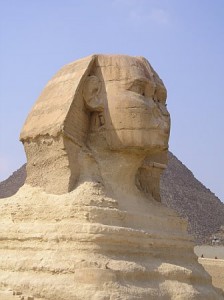
On the dusty plateau of Giza, the last of the ancient wonders of the world stands with the encroaching tumble of the city as its backdrop. Shrouded in mystery, the construction of these colossal monuments is testament to the genius of the Pharaohs and has baffled archaeologists ever since. Those not prone to claustrophobia should clamber inside the narrow and dim passageways of the Great Pyramid of Cheops or the second pyramid of Chephren before saying hello to the nose-less sphinx.
If the clock’s ticking: Arrive at opening time (8am) to avoid the worst of the ticket queues. To save more time, opt out of going inside the Great Pyramid (which is another ticket queue) and instead enter Chephren (tickets can be bought right before you go in).
More time up your sleeve: Seek out the other, even older, Pyramids on a day-trip from Cairo. Saqqara’s step pyramid was the prototype for the ones at Giza and the site’s Imhotep Museum provides a fascinating window on the structure and design of these age-old marvels of architecture.
Islamic Cairo
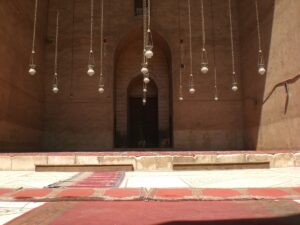
This district is sprinkled with the slender columns of mosque minarets and dripping with monuments of the Mamluk-era. The city’s medieval commercial hub, the souks (market streets) of Khan el-Khalili, will immerse you into a bustle of traders and trinkets and spices and scent. Afterwards head to the Sultan Hassan Mosque for the best of the Mamluk’s surprisingly sedate architecture and then climb the minaret of the Ibn Tulun Mosque for dizzying cityscape views.
If the clock’s ticking: Islamic Cairo’s Khan el-Khalili market stays open late so if you only have 24 hours in the city you can see the Pyramids during the day and wander the souks once dusk falls. The evening breeze, which whisks away the worst of the heat, also makes shopping more pleasant.
More time up your sleeve: Make sure you catch a performance of the El-Tannoura Dance Troupe if you’re here on a Wednesday or Saturday night. Their spell-binding whirling dervish show begins at 8pm at the Wikala el-Ghoriyya, near Khan el-Khalili.
Luxor
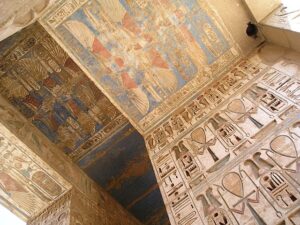
Modern Luxor may be a squat and scruffy town but this was once the site of ancient Thebes. On the west bank of the Nile are the giant columns of Karnak temple; as imposing today as they were when Napoleon’s troops spontaneously struck up the band and formed ranks on setting eyes on the sprawling complex for the first time. After Karnak head across the river to the famous Valley of the Kings with their tombs decorated in a sumptuous palette of rich colours.
If the clock’s ticking: If you hire a local taxi you can easily visit the Valley of the Kings and Karnak in half a day.
More time up your sleeve: Explore the west bank of the Nile further. The mortuary temple of Medinat Habu, the Ramesseum, and the Temple of Hatshepsut are just as awe-inspiring as the more popular Valley of the Kings site.
Nile Cruise
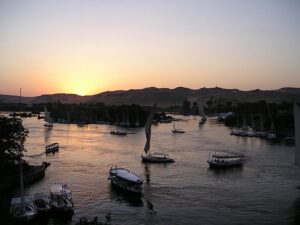
The perfect remedy after all that monument hopping. A cruise upon Africa’s greatest river invites you to sit back, relax and enjoy the fertile valley of the Nile. This narrow strip of lush green is the tranquil, slow-beating heart of Egypt where rural life meanders along at snail-pace. Cruises usually start in Luxor and finish in Aswan, taking in the various temples that stud the river bank along the way.
If the clock’s ticking:
- There are plenty of overnight cruise options for those in a hurry. Even on these speedier trips you’ll manage to get a good overview of Nile Valley life and visit a couple of temples along the way.
More time up your sleeve:
- If you don’t mind roughing it a little there’s nothing more relaxing than sailing out on a felucca (traditional Egyptian sailing boat). Felucca captains tout for business all the way along the Corniche in Aswan, usually offering overnight or two day trips, or you can book through your hotel.
Abu Simbel
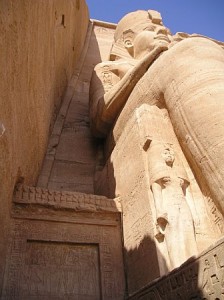
There’s a reason he’s known as Ramses the Great. Never a wallflower or shrinking violet, Ramses II left Egypt littered with temples and totems of his rule but it is here at Abu Simbel that his greatest triumph is on show. Although deep in the south of the country, this ego-driven spectacle is worth the travel time. Head first to the sun-soaked city of Aswan with its sugar-cube housing strung along the Nile. From here a trip to Abu Simbel can be achieved in a day.
If the clock’s ticking: You can fly from Cairo, Luxor and Aswan to Abu Simbel during peak tourist season (winter) and from Aswan in summer. This not only saves you time but is also a lot more comfortable than taking the bus tourist-convoy.
More time up your sleeve: Combine a trip to Abu Simbel with a visit to Philae Temple. All the hotels in Aswan can arrange bus trips to Abu Simbel but be warned, it’s an early start! All tourist transport to the site has to be made by convoy which begins at the unsociable hour of 3.30am.

